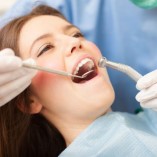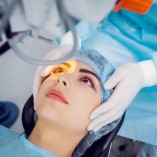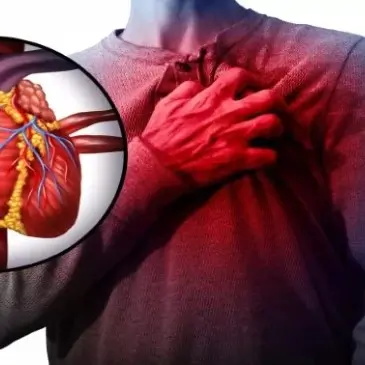Table of Contents
Stem Cell Treatment for Neurological Diseases
Multiple Sclerosis
Stem Cells Used:
- Mesenchymal Stem Cells (MSCs): Derived from bone marrow, adipose tissue, or umbilical cord tissue, MSCs have immunomodulatory properties that can potentially reduce inflammation and repair damaged tissues.
- Hematopoietic Stem Cells (HSCs): Sourced from bone marrow or peripheral blood, HSCs can help reset the immune system.
Procedure:
- Stem Cell Harvesting: MSCs and HSCs are extracted from the patient’s bone marrow or adipose tissue.
- Isolation and Culturing: The stem cells are isolated and cultured to increase their numbers.
- Transplantation: MSCs are typically infused intravenously, while HSCs may be used in autologous hematopoietic stem cell transplantation (aHSCT).
- Monitoring and Follow-up: Patients are monitored for changes in symptoms and potential side effects.
Source: Autologous (from the patient’s own body) to reduce immune rejection.
Effectiveness: Studies have shown promise in reducing disease activity and improving neurological function, but more research is needed to confirm long-term efficacy.
Parkinson’s
Stem Cells Used:
- Mesenchymal Stem Cells (MSCs): Sourced from bone marrow or adipose tissue, MSCs can differentiate into dopamine-producing neurons.
- Neural Stem Cells (NSCs): Derived from embryonic stem cells (ESCs) or induced pluripotent stem cells (iPSCs), NSCs can develop into various neural cell types.
Procedure:
- Stem Cell Harvesting: MSCs are harvested from the patient’s bone marrow or adipose tissue.
- Isolation and Culturing: The harvested stem cells are cultured and differentiated into neural cells.
- Transplantation: The cells are injected into the brain, typically in the areas affected by Parkinson’s.
- Monitoring and Follow-up: Neurological function and potential side effects are closely monitored.
Source: Autologous or allogeneic (donor-derived).
Effectiveness: Early studies indicate potential benefits in improving motor function, but further research is necessary to establish long-term safety and efficacy.
Cerebral Palsy
Stem Cells Used:
- Mesenchymal Stem Cells (MSCs): Obtained from bone marrow or umbilical cord tissue, MSCs can aid in reducing inflammation and promoting repair of neural tissues.
- Neural Stem Cells (NSCs): Derived from iPSCs or ESCs.
Procedure:
- Stem Cell Harvesting: MSCs are collected from bone marrow or umbilical cord tissue.
- Isolation and Culturing: Stem cells are cultured to increase their numbers.
- Transplantation: Cells are administered through intravenous infusion or direct injection into affected areas.
- Monitoring and Follow-up: Functionality improvements and side effects are monitored.
Source: Autologous or allogeneic.
Effectiveness: Promising results have been observed in reducing symptoms and improving motor function, but more studies are required for conclusive evidence.
Epilepsy
Stem Cells Used:
- Mesenchymal Stem Cells (MSCs): Sourced from bone marrow or adipose tissue.
- Neural Stem Cells (NSCs): Derived from iPSCs or ESCs.
Procedure:
- Stem Cell Harvesting: MSCs are harvested from bone marrow or adipose tissue.
- Isolation and Culturing: Cells are cultured and potentially differentiated into neural cells.
- Transplantation: Cells are infused intravenously or directly injected into the brain.
- Monitoring and Follow-up: Seizure frequency and neurological function are monitored.
Source: Autologous or allogeneic.
Effectiveness: Early studies suggest potential benefits in reducing seizure frequency, but more clinical trials are needed.
Stem Cell Treatment for Blood-borne Cancers
Leukemia
Stem Cells Used:
- Hematopoietic Stem Cells (HSCs): Sourced from bone marrow, peripheral blood, or umbilical cord blood.
Procedure:
- Stem Cell Harvesting: HSCs are collected from bone marrow, peripheral blood, or umbilical cord blood.
- Conditioning Therapy: High-dose chemotherapy or radiation to destroy cancerous cells.
- Transplantation: HSCs are infused intravenously to repopulate the bone marrow.
- Monitoring and Follow-up: Blood counts and potential complications are monitored.
Source: Autologous or allogeneic.
Effectiveness: Proven to be effective in many cases, especially when combined with chemotherapy and radiation.
Non-Hodgkin’s Lymphoma
Stem Cells Used:
- Hematopoietic Stem Cells (HSCs): Sourced from bone marrow, peripheral blood, or umbilical cord blood.
Procedure:
- Stem Cell Harvesting: HSCs are collected from bone marrow, peripheral blood, or umbilical cord blood.
- Conditioning Therapy: High-dose chemotherapy or radiation to eliminate cancerous cells.
- Transplantation: HSCs are infused intravenously.
- Monitoring and Follow-up: Immune recovery and potential side effects are closely monitored.
Source: Autologous or allogeneic.
Effectiveness: Effective in many patients, particularly when other treatments have failed.
Multiple Myeloma
Stem Cells Used:
- Hematopoietic Stem Cells (HSCs): Sourced from bone marrow, peripheral blood, or umbilical cord blood.
Procedure:
- Stem Cell Harvesting: HSCs are collected from bone marrow, peripheral blood, or umbilical cord blood.
- Conditioning Therapy: High-dose chemotherapy to destroy myeloma cells.
- Transplantation: HSCs are infused intravenously.
- Monitoring and Follow-up: Blood counts and immune function are monitored.
Source: Autologous or allogeneic.
Effectiveness: Highly effective in extending remission periods and improving survival rates.
Stem Cell Treatment for Heart Disease
Myocardial Infarction
Stem Cells Used:
- Mesenchymal Stem Cells (MSCs): Derived from bone marrow or adipose tissue.
- Cardiac Stem Cells (CSCs): Isolated from heart tissue or derived from iPSCs.
Procedure:
- Stem Cell Harvesting: MSCs or CSCs are collected.
- Isolation and Culturing: Stem cells are cultured and potentially differentiated.
- Transplantation: Cells are injected into the heart or infused intravenously.
- Monitoring and Follow-up: Heart function and symptoms are monitored.
Source: Autologous or allogeneic.
Effectiveness: Promising results in improving heart function and reducing scar tissue, but more research is needed.
Atherosclerosis
Stem Cells Used:
- Mesenchymal Stem Cells (MSCs): Derived from bone marrow or adipose tissue.
Procedure:
- Stem Cell Harvesting: MSCs are collected.
- Isolation and Culturing: Stem cells are cultured and potentially differentiated.
- Transplantation: Cells are injected into the affected blood vessels or infused intravenously.
- Monitoring and Follow-up: Blood vessel health and symptoms are monitored.
Source: Autologous or allogeneic.
Effectiveness: Early studies suggest potential in reducing plaque buildup and promoting blood vessel repair.
Congestive Heart Failure
Stem Cells Used:
- Mesenchymal Stem Cells (MSCs): Derived from bone marrow or adipose tissue.
- Cardiac Stem Cells (CSCs): Isolated from heart tissue or derived from iPSCs.
Procedure:
- Stem Cell Harvesting: MSCs or CSCs are collected.
- Isolation and Culturing: Stem cells are cultured and potentially differentiated.
- Transplantation: Cells are injected into the heart or infused intravenously.
- Monitoring and Follow-up: Heart function and symptoms are monitored.
Source: Autologous or allogeneic.
Effectiveness: Shows promise in improving heart function and quality of life, but further research is required.
Stem Cell Treatment for Organ Cancers
Breast Cancer
Stem Cells Used:
- Hematopoietic Stem Cells (HSCs): Sourced from bone marrow, peripheral blood, or umbilical cord blood.
Procedure:
- Stem Cell Harvesting: HSCs are collected.
- Conditioning Therapy: High-dose chemotherapy to eliminate cancer cells.
- Transplantation: HSCs are infused intravenously.
- Monitoring and Follow-up: Blood counts and immune function are monitored.
Source: Autologous or allogeneic.
Effectiveness: Effective in some cases, particularly when combined with chemotherapy and radiation.
Prostate Cancer
Stem Cells Used:
- Hematopoietic Stem Cells (HSCs): Sourced from bone marrow, peripheral blood, or umbilical cord blood.
Procedure:
- Stem Cell Harvesting: HSCs are collected.
- Conditioning Therapy: High-dose chemotherapy to eliminate cancer cells.
- Transplantation: HSCs are infused intravenously.
- Monitoring and Follow-up: Blood counts and immune function are monitored.
Source: Autologous or allogeneic.
Effectiveness: Promising results in combination with other treatments, but more research is needed.
Lung Cancer
Stem Cells Used:
- Hematopoietic Stem Cells (HSCs): Sourced from bone marrow, peripheral blood, or umbilical cord blood.
Procedure:
- Stem Cell Harvesting: HSCs are collected.
- Conditioning Therapy: High-dose chemotherapy to eliminate cancer cells.
- Transplantation: HSCs are infused intravenously.
- Monitoring and Follow-up: Blood counts and immune function are monitored.
Source: Autologous or allogeneic.
Effectiveness: Effective in some cases, particularly in combination with other treatments.
Malignant Melanoma
Stem Cells Used:
- Hematopoietic Stem Cells (HSCs): Sourced from bone marrow, peripheral blood, or umbilical cord blood.
Procedure:
- Stem Cell Harvesting: HSCs are collected.
- Conditioning Therapy: High-dose chemotherapy to eliminate cancer cells.
- Transplantation: HSCs are infused intravenously.
- Monitoring and Follow-up: Blood counts and immune function are monitored.
Source: Autologous or allogeneic.
Effectiveness: Promising results in combination with immunotherapy, but further research is needed.
Stem Cell Treatment for Hormonal, Immune, and Circulatory Issues
Auto-immune Diseases (e.g., Rheumatoid Arthritis, Lupus, Muscular Dystrophy)
Stem Cells Used:
- Mesenchymal Stem Cells (MSCs): Derived from bone marrow or adipose tissue.
- Hematopoietic Stem Cells (HSCs): Sourced from bone marrow, peripheral blood, or umbilical cord blood.
Procedure:
- Stem Cell Harvesting: MSCs or HSCs are collected.
- Isolation and Culturing: Cells are cultured and potentially differentiated.
- Transplantation: Cells are infused intravenously.
- Monitoring and Follow-up: Immune function and symptoms are monitored.
Source: Autologous or allogeneic.
Effectiveness: Shows promise in reducing symptoms and modulating the immune system, but more research is needed.
Chronic Infections (e.g., Tuberculosis, Hepatitis C)
Stem Cells Used:
- Mesenchymal Stem Cells (MSCs): Derived from bone marrow or adipose tissue.
Procedure:
- Stem Cell Harvesting: MSCs are collected.
- Isolation and Culturing: Cells are cultured and potentially differentiated.
- Transplantation: Cells are infused intravenously.
- Monitoring and Follow-up: Immune response and symptoms are monitored.
Source: Autologous or allogeneic.
Effectiveness: Early studies suggest potential benefits in enhancing immune response and promoting healing, but more research is needed.
Stem Cell Treatment for Hormonal, Immune, and Circulatory Issues
Spinal Cord Injury
Stem Cells Used:
- Mesenchymal Stem Cells (MSCs): Derived from bone marrow or adipose tissue.
- Neural Stem Cells (NSCs): Derived from iPSCs or ESCs.
Procedure:
- Stem Cell Harvesting: MSCs or NSCs are collected.
- Isolation and Culturing: Cells are cultured and potentially differentiated.
- Transplantation: Cells are injected into the spinal cord or infused intravenously.
- Monitoring and Follow-up: Motor function and potential side effects are monitored.
Source: Autologous or allogeneic.
Effectiveness: Promising results in improving motor function and reducing symptoms, but more research is needed.
Bone Damage (Injuries and Disease)
Stem Cells Used:
- Mesenchymal Stem Cells (MSCs): Derived from bone marrow or adipose tissue.
Procedure:
- Stem Cell Harvesting: MSCs are collected.
- Isolation and Culturing: Cells are cultured and potentially differentiated.
- Transplantation: Cells are injected into the affected bone or infused intravenously.
- Monitoring and Follow-up: Bone healing and potential side effects are monitored.
Source: Autologous or allogeneic.
Effectiveness: Shows promise in promoting bone healing and reducing pain, but further research is required.
Joint Injuries and Diseases
Stem Cells Used:
- Mesenchymal Stem Cells (MSCs): Derived from bone marrow or adipose tissue.
Procedure:
- Stem Cell Harvesting: MSCs are collected.
- Isolation and Culturing: Cells are cultured and potentially differentiated.
- Transplantation: Cells are injected into the affected joint or infused intravenously.
- Monitoring and Follow-up: Joint function and potential side effects are monitored.
Source: Autologous or allogeneic.
Effectiveness: Early studies indicate potential benefits in reducing pain and improving joint function, but more research is needed.

















